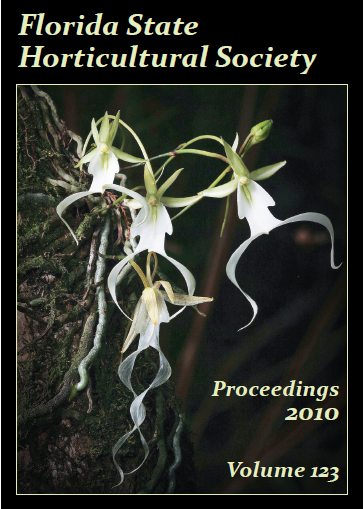Abstract
The presence of avocado sunblotch viroid (ASBVd) infection among the avocado (Persea americana Mill.) accessions in the National Germplasm Repository at Miami (NGR–Miami) was established in previous studies. An ASBVd specific reverse transcription-polymerase chain reaction (RT-PCR) protocol was used to detect the viroid. Surveys performed in 1996 and in 2000 found that the proportion of ASBVd positive accessions remained unchanged at 19% during that time period. The object of the current study was to assess the spread of infection, if any, and the rate and direction of transmission. For this purpose the collection was screened again for ASBVd in 2009. The germplasm collection increased from 403 to 505 trees. Fifty newly infected trees were detected. Forty-eight percent of the newly infected plants were found to be adjacent to previously infected plants, adjacent to plots from which infected plants had been removed, or adjacent to other newly infected plants that are adjacent to previously infected plants or contaminated plots. No pattern in direction of spread was discerned for non-adjacent new infections. The proportion of plants found to be positive for the viroid in the current study is 21%. Fourteen plants previously found to be infected were found to be negative in this survey. The proportion of infected plants (historically and at present) in the current collection is 24%. The increase in ASBVd infections reinforces the importance of establishing back-up collections at different locations. Establishment of collections at the NGR in Hawaii is currently under way.

